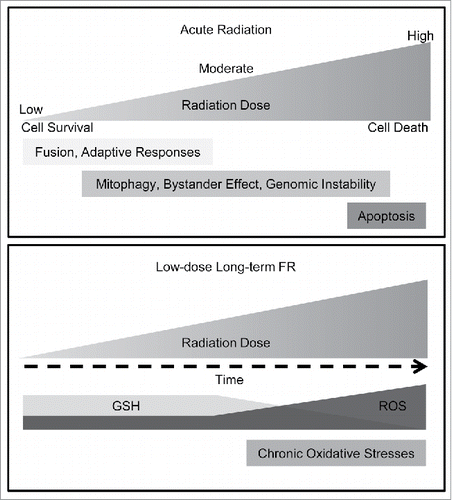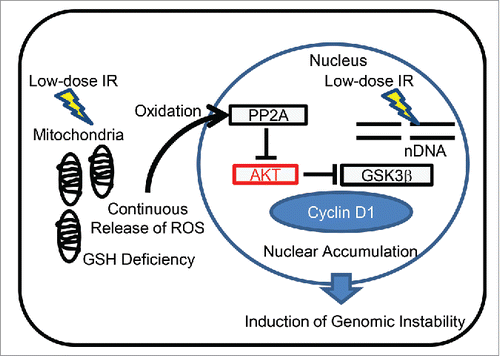Figures & data
Figure 1. Radiation response of mitochondria The upper panel shows the difference in the radiation response of mitochondria according to the radiation dose after acute single radiation. The lower panel shows the mitochondrial radiation response to low-dose long-term fractionated radiation.

Figure 2. Nuclear retention of cyclin D1 by mitochondrial ROS. ROS are released from the mitochondria after low-dose long-term FR. Mitochondrial ROS inactivate PP2A, which in turn causes a loss of negative feedback control of the AKT pathway, leading to nuclear cyclin D1 accumulation. Perturbation of cyclin D1 expression causes genomic instability in irradiated cells.

